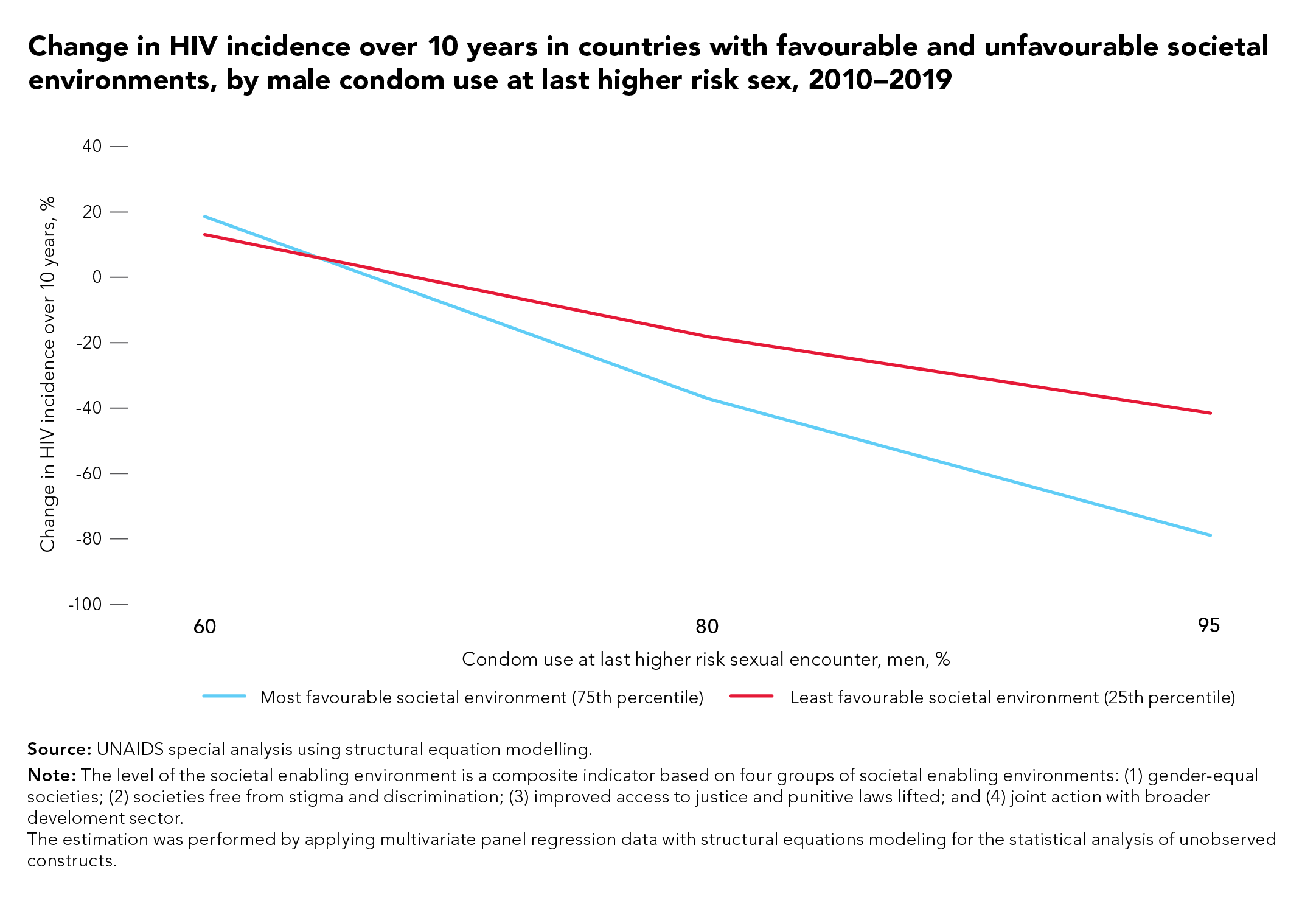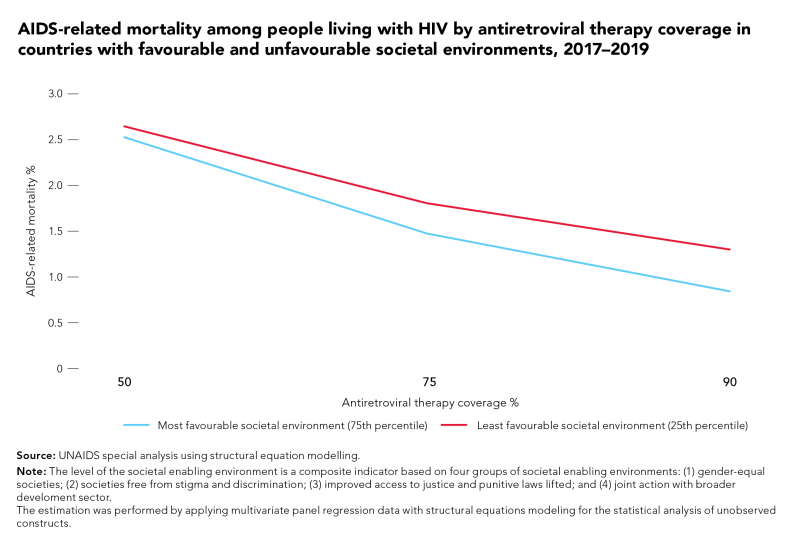UNAIDS has proposed a new set of bold, ambitious but achievable HIV targets for 2025. Modelling has shown that if the targets promoting favourable societal environments are met, 440 000 AIDS-related deaths would be averted and 2.6 million additional new HIV infections would be prevented. Related modelling has also shown that countries with more enabling societal and legal environments-defined as societies that are gender-equal, free from stigma and discrimination, and with improved access to justice where punitive laws have been lifted and where joint action is taken with the broader development sector-had stronger positive correlations between HIV service coverage and HIV impacts.
For example, countries with better societal enabling environments are associated with bigger declines in HIV incidence over the past 10 years than countries with worse enabling environments having the same level of condom use by men at the last high-risk sex encounter.

Lower levels of AIDS-related mortality among people living with HIV occur in the countries with the most favourable societal environments, compared to countries with the least favourable societal environments at varying levels of antiretroviral therapy.







